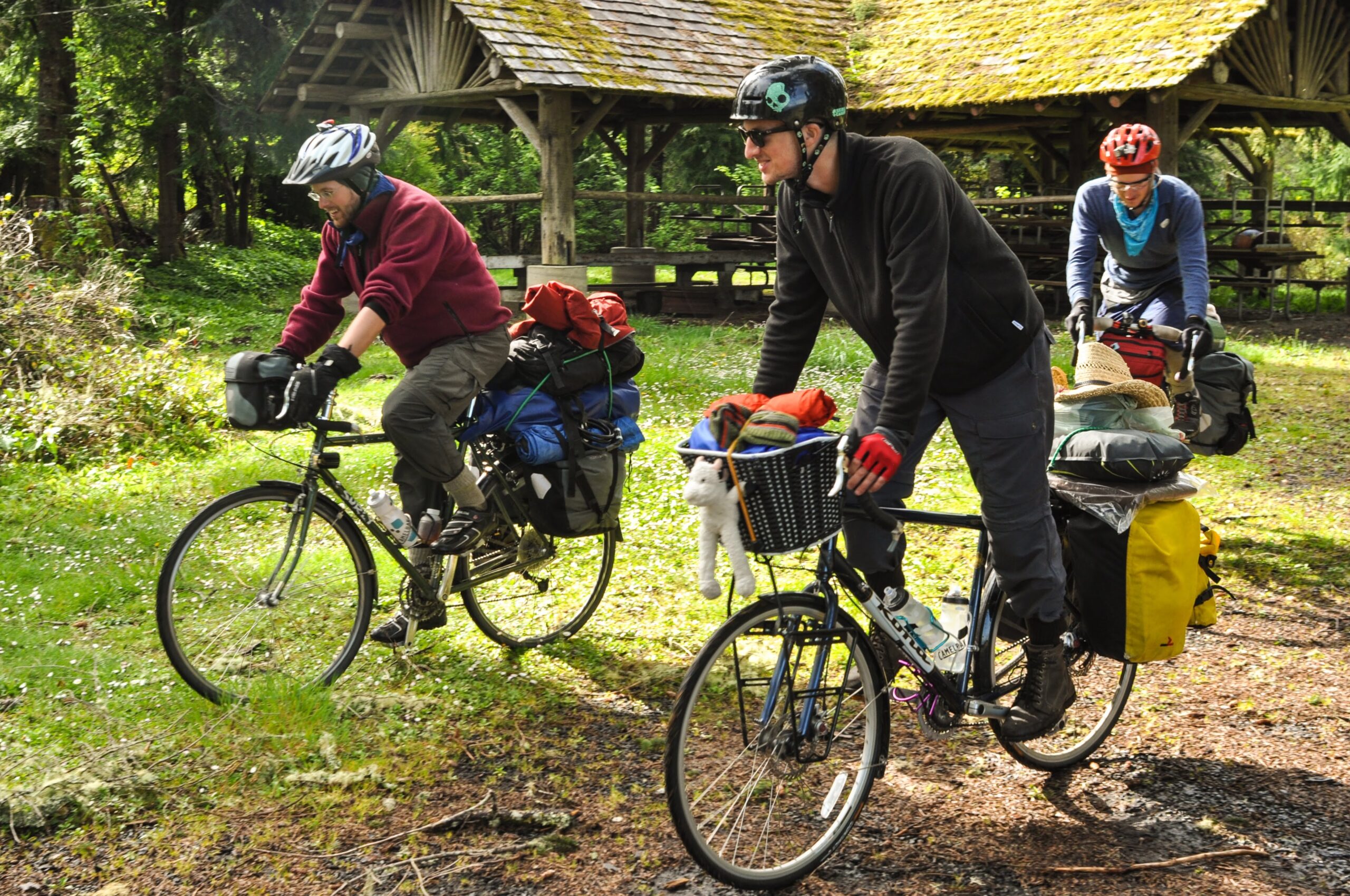A reader writes:
Are you familiar with [the Great American Rail Trail] at all? The route is currently about 55% off road and more complete in the east but there is an almost 1,000 [mile] gap through Montana and Wyoming.
So my question is what app do you use when riding to find the best on-road [but] safe cycling conditions on the gap sections between trails?
And do you have a favorite app to find accommodations: camping (preferred) or hotels on the route every few days?
Thanks for the question! Let’s start with what might be called “dynamic” route planning for cycle touring. This is when you have specific start and end points, and perhaps a number of intermediate points along the way, but the route between these two points is not yet clear.
In your case, you want an app that will help you plan safe, cycle-friendly routes in the gaps between established sections of a long-distance route in development, specifically the Great American Rail Trail.
But if you think about it, there are countless scenarios on a cycle tour or bikepacking trip in which the same need for route planning could arise. You may want to break off an established route to visit a specific location. You might be in an area with no established cycle routes at all and be making it up as you go along. In fact, for many riders, not quite knowing where you’re going is the norm, rather than the exception – all part of the adventure of exploring the world by bicycle.
Dynamic route planning used to be about asking locals or fellow travellers, following road signs, reading landscapes, and occasionally relying on sheer luck to find your way. All of that is still possible, but today, we are also blessed with an abundance of data, including (for many parts of the world) detailed digital maps we can carry around in our pockets and use offline. This, plus the ubiquity of the smartphone, has given rise to a rich and competitive field of cycle route planning apps, the capabilities of which continue to improve at an astonishing rate.
Having been through a huge number of such apps, I personally now use a small suite of apps in combination, including cycle.travel, komoot, and RideWithGPS. These platforms all make use of crowdsourced OpenStreetMap data, which as well as paved roads also includes huge number of waymarked cycle routes, dirt and gravel roads, farm and fire roads, public byways, and the like, rather than being restricted to the official road data on which platforms like Google Maps rely. They also allow you to fine-tune your riding preferences when using the routing algorithms to plan routes. My suggestion would be to try all of them and see which feels the most intuitive to you (and produces routes you’re happy with on the ground!).
For a relatively large 1,000-mile gap like the one in Wyoming on the Great American Rail Trail, I would also break the route down into several shorter sections, perhaps between planned overnight stops or major settlements, and then use your preferred app to plan a series of routes. As well as giving you more control over the overall route by choosing the main anchors yourself, it might also allow you to spend time getting a feel for how the apps work, what adjustments you might need to make to their suggestions, and which you prefer to use.
Regarding apps and platforms for finding accommodation and campsites, you’ll find all of the above apps include campgrounds in their mapping data, but there are also a number of apps that deal specifically with finding campsites and associated facilities.
While the popularity of different campsite finder platforms can vary between countries, one I’ve found useful around the world is iOverlander. This is a community-built database of points of interest for overland travellers – mostly for people driving RVs or riding motorbikes, but it can be very helpful for cyclists too as people tend to submit wild/free camping spots in popular areas. The interface is a bit clunky, but it’s a hobbyist project after all, and the quality of the data matters more anyway.
Another campsite finder app to check out is WikiCamps, which currently operates in five countries, including the USA. I’ve personally only used this in its native Australia, but the USA-specific WikiCamps app professes to hold the most comprehensive database of campgrounds and associated facilities in the land. WikiCamps is tightly focused on official campgrounds (including hiker-biker sites which are mercifully free of RVs), whereas iOverlander users also submit unofficial (ie: wild/free) camping spots, so both apps have their strengths. Again, WikiCamps is designed to appeal to travellers using a range of modes of transport beyond the bicycle, but the bulk of its data should be just as applicable to you as to anyone else.
Aside from that, I use mainstream apps like Google Maps and Booking.com to find businesses like hotels and motels, simply because – like it or not – every accommodation provider today needs to make sure they’re visible on Google Maps and Booking.com to get customers!
For more apps of use to cycle tourers and bikepackers, do check out my up-to-date app listings, which go far beyond mapping and route planning apps and include app suggestions to cover every aspect of the bicycle travel lifestyle.
Hope this helps and all the best with the planning – please feel free to send any other questions my way!
This is part of my “No Stupid Questions” series, in which readers write in with questions about cycle touring or bikepacking and I attempt to answer them. Check out more recent posts in the series or ask one of your own.


Something to add?